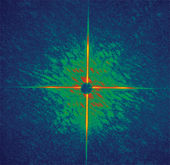OF THE
TIMES
"The purpose of GLADIO was to attack civilians, the people - women, children, innocent people, unknown people, far removed from any political game. The reason was quite simple: to force the public to turn to the State and demand greater security. Under a strategy of tension, you 'destabilize in order to stabilize', to create tension within society and promote conservative, reactionary social and political tendencies."
~ Italian neo-fascist whose prosecution led to the discovery of NATO's 'Gladio' networks across Western Europe
'As deadline nears, the WHO Treaty proposes a deadly biomedical threat to humanity' The WHO treaty, coming to a vote shortly, is recommending a...
"It seems that the news of the death of Iranian President Ebrahim Raisi and Iranian Foreign Minister Hossein Amir Abdollahian is confirmed, and...
why attack sky news for stating the obvious ? "expressing barely concealed delight" *roll eyes* and Independent journalist (?) and RT contributor...
I had to look up how such a thing is used. Here is what I found: " The threshing board has been traditionally pulled by mules or by oxen over the...
I'm just betting Adams is a " non swimmer " therefore anyone else would be an excellent swimmer.
To submit an article for publication, see our Submission Guidelines
Reader comments do not necessarily reflect the views of the volunteers, editors, and directors of SOTT.net or the Quantum Future Group.
Some icons on this site were created by: Afterglow, Aha-Soft, AntialiasFactory, artdesigner.lv, Artura, DailyOverview, Everaldo, GraphicsFuel, IconFactory, Iconka, IconShock, Icons-Land, i-love-icons, KDE-look.org, Klukeart, mugenb16, Map Icons Collection, PetshopBoxStudio, VisualPharm, wbeiruti, WebIconset
Powered by PikaJS 🐁 and In·Site
Original content © 2002-2024 by Sott.net/Signs of the Times. See: FAIR USE NOTICE

Reader Comments
to our Newsletter